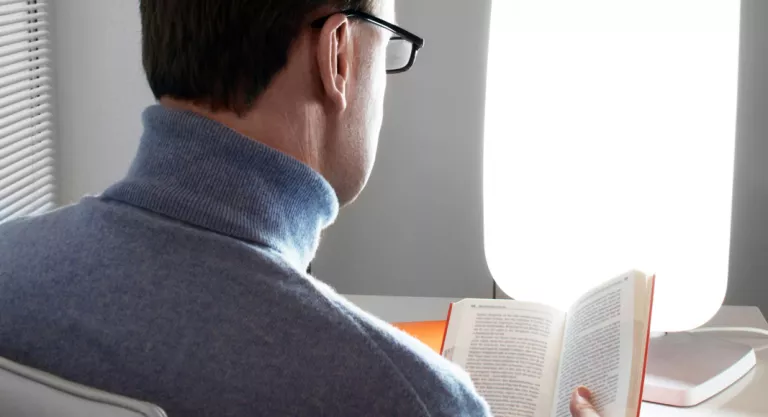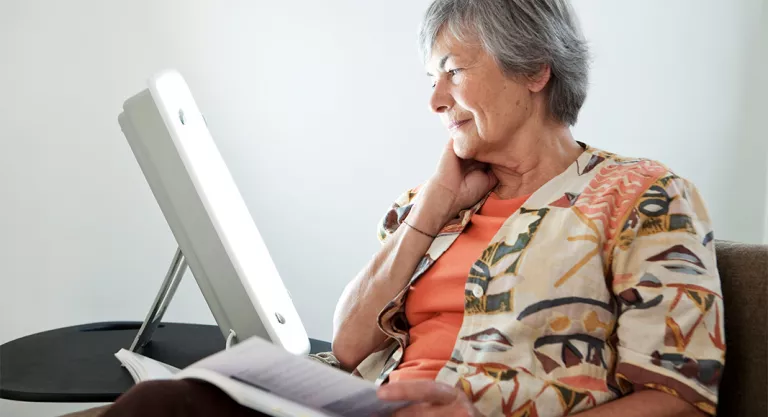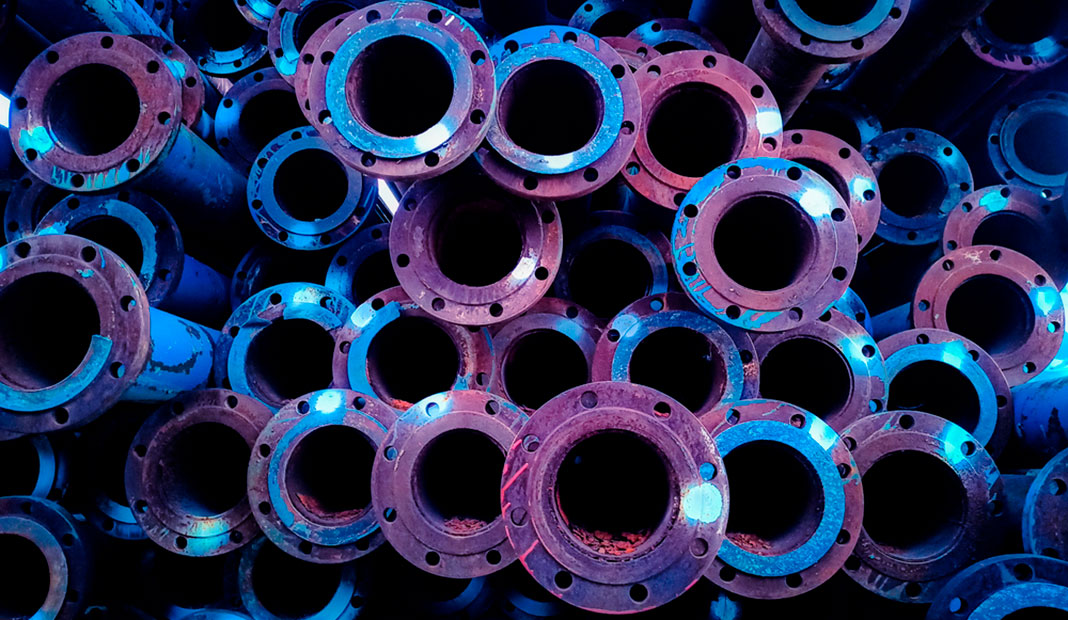Light is very important for our health, especially for our mental health. Having a clear and sunny day makes us feel in a better mood and with much more energy than on those cloudy or rainy days when the sun is hidden. This, which seems silly, can even degenerate into more serious psychological problems, such as seasonal affective disorder, depression or anxiety.
All of these problems are much more common in the Nordic countries, where daylight hours are limited, hence there are also much higher levels of suicides. Apart from a good psychological or even pharmacological therapy, what is known as phototherapy or light therapy is sometimes used, a way of alleviating these affective or seasonal disorders through exposure to artificial light. And that is where daylight lamps or SAD lamps come into play, light boxes that help counteract this poor lighting condition.
What are SAD lamps or phototherapy boxes
Sad lamps “are a type of lamps that receive this name because SAD stands for sadness, because they are a tool that is proposed to treat depressive disorders, especially those related to seasonal changes, since it is It is quite common for some people to develop depressive symptoms associated with the change in light between summer and winter”, explains Vanesa Fernández, a psychologist who is an expert in emotions and a professor at the Complutense University of Madrid.
According to the expert, these types of lamps are a good option for light therapy or phototherapy. These devices, which have a square, rectangular or round shape, emit a very powerful light that can be adjusted and that reproduce sunlight in a very similar way, which manages to activate the generation of chemical substances in the brain –mainly serotonin– that are related to an improvement in mood and the regulation of circadian rhythms.
SAD lamps mimic the light produced by the sun to trick the body into producing substances like serotonin and regulating circadian rhythms
This point is very important, the body regulates its internal clock through circadian rhythms. In this way, when there is light we remain more active and when night falls its power decreases to give way to restful sleep. However, the lack of light can cause alterations in this regulator, causing tiredness, fatigue, bad mood, sadness or even seasonal affective disorder.
SAD lamps produce a light that is measured in lux, which indicates the intensity of the luminosity combined with the area, usually ranging from 3,000 lux to 15,000 lux, with an average of 10,000 lux. This device should be able to be placed above the eyes and at a slight downward angle, in this way possible glare will be reduced.
Uses and applications of daylight lamps: for whom they are recommended
The main objective of these lamps is to help people with seasonal affective disorder, which is a type of depression that usually occurs between autumn and winter as a result of reduced light levels. As Dr. Fernández explains, this disorder is characterized by the fact that people who suffer from it feel sad, dull, fatigued and sometimes there is a weight gain without an increase in calorie intake. It is also common for insomnia, irritability or episodes of headaches to appear.

The usual treatment of this problem is with psychotropic drugs, that is, antidepressants in combination with anxiolytics, but daylight lamps are increasingly being recommended when it is clear that this disorder is seasonal affective due to changes in light. Of course, in all cases it should be used in combination with psychotherapy so that they are given some habits and a series of strategies to deal with day-to-day discomfort, the professor at the Complutense University of Madrid clarifies.
According to Iván Eguzquiza, Behavioral Psychologist specializing in Sleep at the Sleep Institute, “people who are little exposed to sunlight due to their living conditions or work schedules can also benefit from the use of these lamps. On the other hand, it is estimated that half of the population has a markedly nocturnal or diurnal hourly pattern of melatonin secretion, in some cases developing what is called a Phase Disorder”.
“This problem can end up generating significant sleep problems with many daytime repercussions on a physical, emotional and cognitive level. What happens in these cases is that these people are being affected without being aware that they suffer from said disorder. This happens, for example, with many adolescents, who have great difficulty falling asleep and are very sleepy in the morning. Or with many older people who fall asleep very early, but wake up much earlier than desired. The supervised use of these SAD lamps by a sleep specialist, together with a sleep agenda and other added care, manage to solve these problems in a few weeks and in a natural way”.
But are these phototherapy lamps really effective? That is the question you might be asking yourself right now. The answer that Vanesa Fernández gives us is that “it is true that there is not a lot of information in the scientific literature about it, but light therapies have been used for years in Nordic countries especially, such as in Sweden, Norway, England where this type of light therapy is used for depressive patients, especially those in the cohort with seasonal depression”.

In addition, he adds that “obviously this type of therapy is useless if we are facing a case of depression due to a relationship problem, breakup or major depression, which is due to a deficit of neurotransmitters. In those cases, especially where depression is associated with seasonal problems, it is showing itself to be very useful in helping the patient improve their state of mind, always combined with behavioral recommendations and lifestyle habits that help the patient improve their state of mind. encouragement and to find yourself more comfortable with your emotions”.
One of the studies carried out on this type of phototherapy, published in the Journal of Clinical Sleep Medicine, has revealed that using these lamps during periods of the year when daylight hours are short could help regulate the circadian rhythm, which would affect an improvement in mood and a reduction in symptoms of depression.
How SAD lamps are used and for how long
Daylight lamps are portable, that is, you can move them to different rooms in the house to continue using them no matter what task you do. Most of them are adjustable in intensity, ranging from 15,000 lux at maximum power to lower ones. To get an idea, about 10,000 lux would be equivalent to 20 times the light generated by most indoor lights.
The ideal is to use them first thing in the morning and, according to the psychologist Vanesa Fernández, “their thing is to start with a higher intensity, I would start with 10,000 lux and then throughout the day you have to adjust it downwards, until the 6,000 lux or 5,000 lux for example, which would be adequate to later remove it at nightfall. It is like simulating the light of a Mediterranean country”.
Daylight lamps can have up to 15,000 lux, to get an idea, 10,000 lux is equal to 20 times the general interior light
As Iván Eguzquiza explains, this device should not be used throughout the day, but rather for short periods that range between 30 minutes and two hours a day, for example, while working or watching television, although this will adjust it better the medical professional who prescribed it. As for the distance to be placed with respect to the lamp, it is best to read the manufacturer’s instructions, but it is usually between 40 and 60 cm.
Contraindications of daylight lamps
Phototherapy has some contraindications, for example, people with diseases related to the retina of the eye, diabetes, systemic lupus erythematosus, skin cancer or who are being treated with photosensitizing drugs, such as melatonin, lithium, some antibiotics or antipsychotics with phenothiazine should avoid the use of these lamps.

It is important to use an adequate SAD lamp, and specifically designed for this type of emotional disorder, otherwise it could not have any effect on health. Choose one that filters ultraviolet (UV) light, as this type of light – which is used by other types of lamps used for other skin disorders – could damage your skin and eyes. Also, the bigger it is the more you can move around without slowing down the exposure, make sure you take all this into account before your purchase.
In general, the best thing to do before using this type of lamp is to consult with your doctor or medical professional to see if you could benefit from its effects, or, on the contrary, it could even worsen your health conditions.
.














